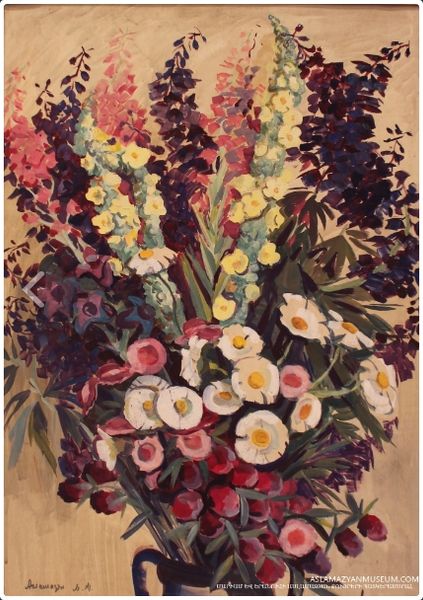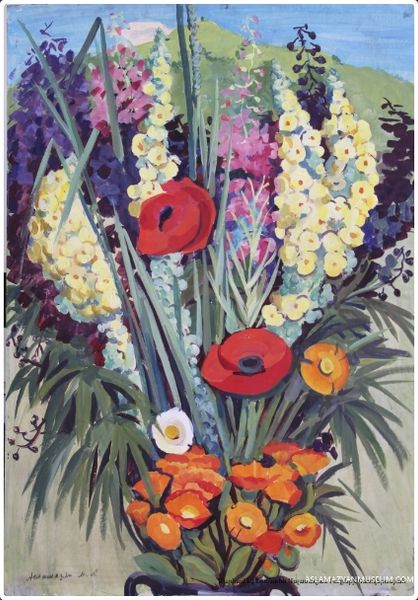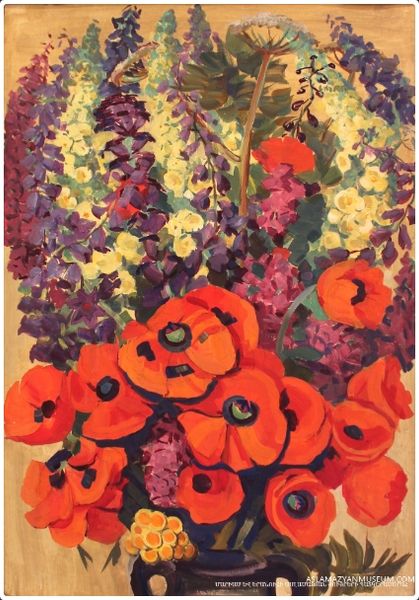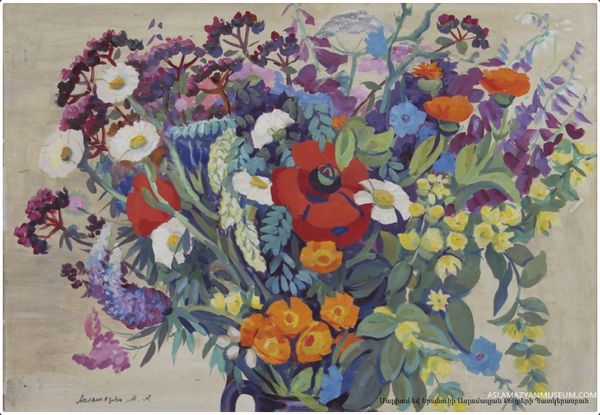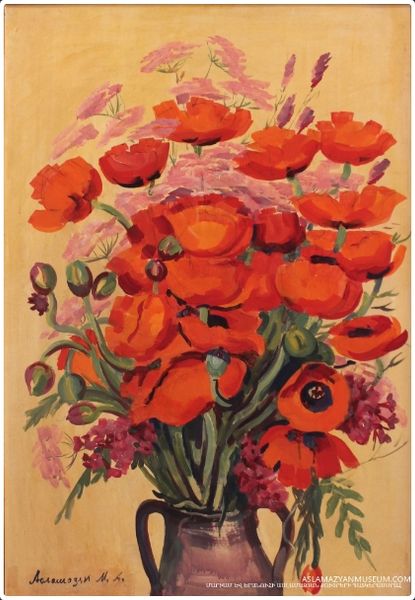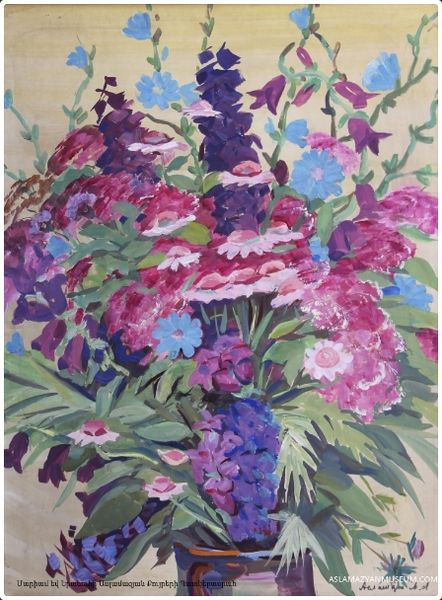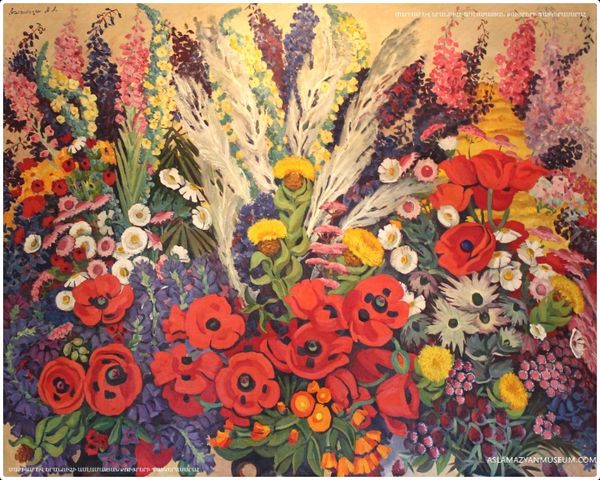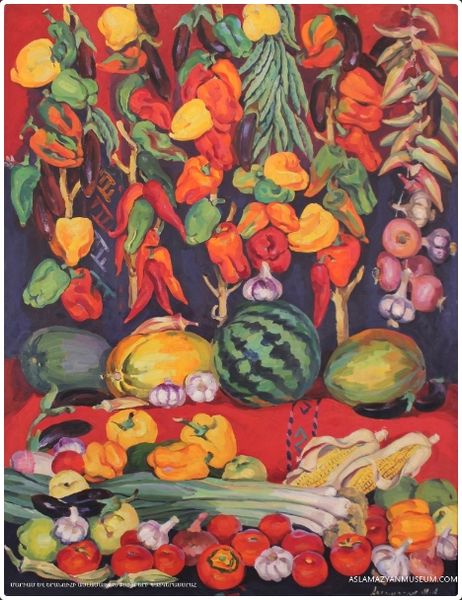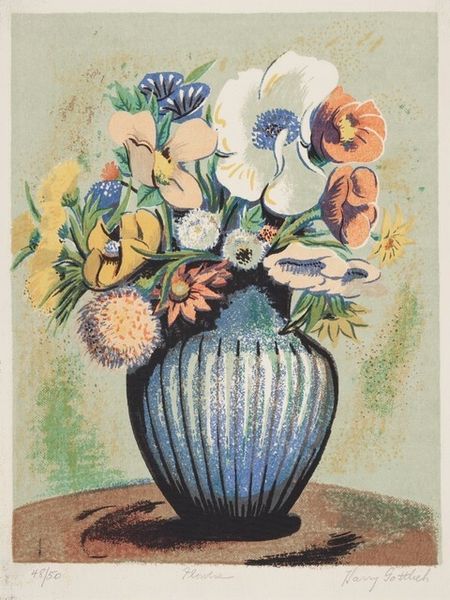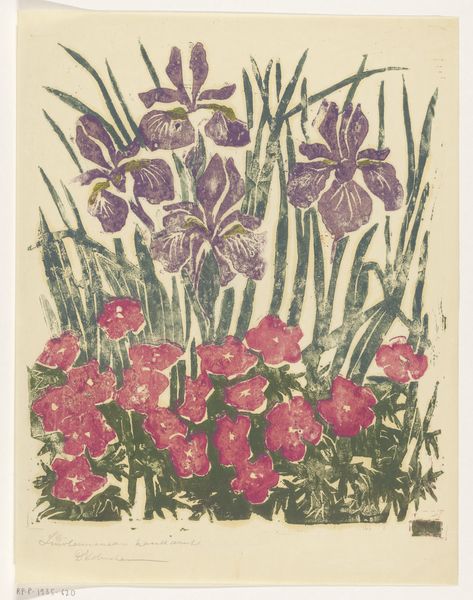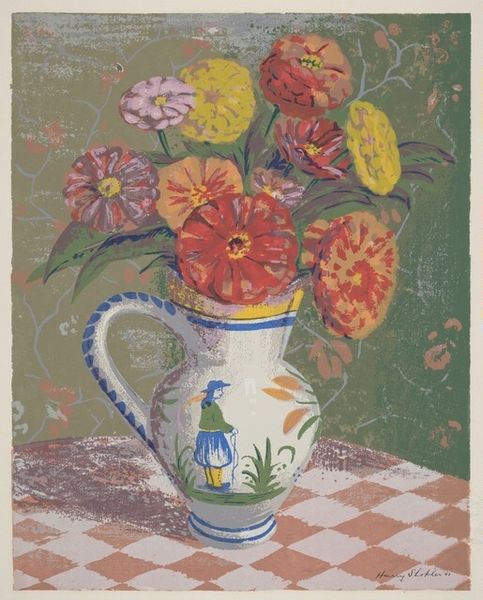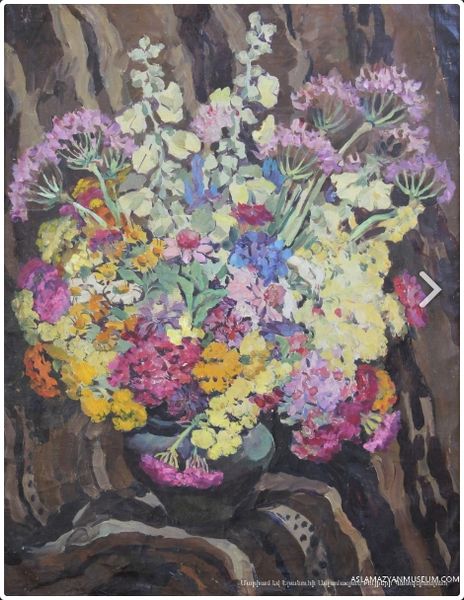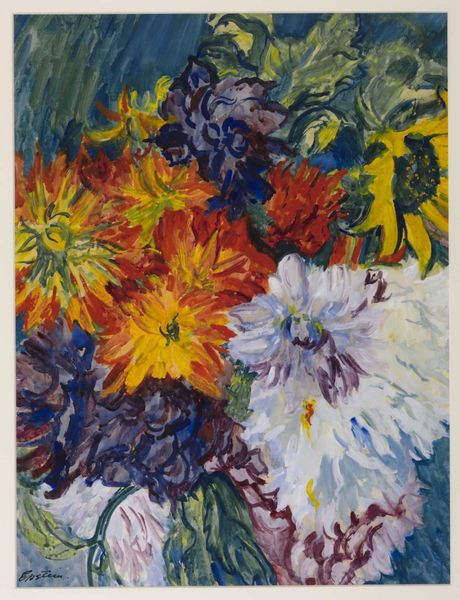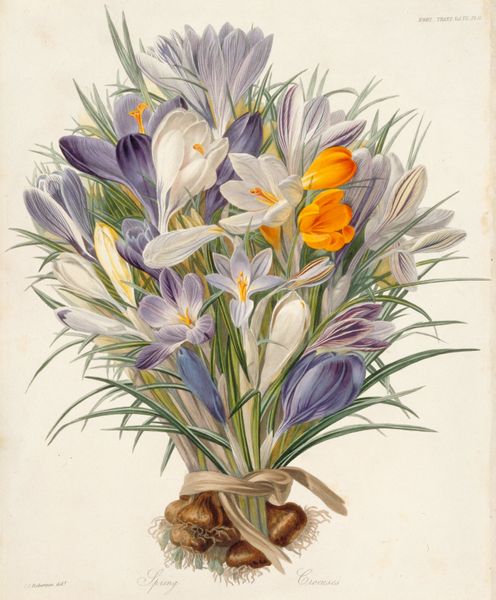
Dimensions: 100 x 70 cm
Copyright: Mariam Aslamazian,Fair Use
Editor: So, this is Mariam Aslamazian's "Silver Grass with Yellow Flowers," created in 1974, using oil paints and seemingly impasto. It's giving me a strong sense of Armenian countryside. How should we be interpreting a painting like this, considering how materials were sourced, or anything about the artist's access to materials? Curator: Considering Aslamazian's practice within the Soviet context, let’s consider what ‘materials’ signify beyond just paint and canvas. How does the availability – or scarcity – of certain pigments, the quality of the canvas, affect the artwork? Are we seeing a commentary on material accessibility within a socialist framework? Also the thick application of paint could be read as an emphasis on materiality, almost defiant. What kind of labour might have gone into producing her paints or canvas in 1970s Armenia? Editor: That's really interesting! So the impasto style could almost be a political statement by way of just, like, *using* paint? Does the fact it's a still life impact your thinking around the material conditions that affect production of the artwork? Curator: Precisely. It’s not merely about *what* she's painting, but *how* she’s using these available resources. Does depicting wildflowers, easily foraged, perhaps point to accessibility in a way a depiction of hothouse orchids might not? Editor: Okay, that shifts my perspective considerably. Seeing this vibrant painting as not just a pleasant still life, but also something tied to those broader social conditions of access to resources opens things up! I definitely see it now. Curator: Absolutely! Recognizing that the choices of materials, and application, speak volumes about the intersection of artistic practice and the world it occupies. We move beyond appreciating aesthetic beauty, toward acknowledging materiality as the medium itself is saying something.
Comments
No comments
Be the first to comment and join the conversation on the ultimate creative platform.
